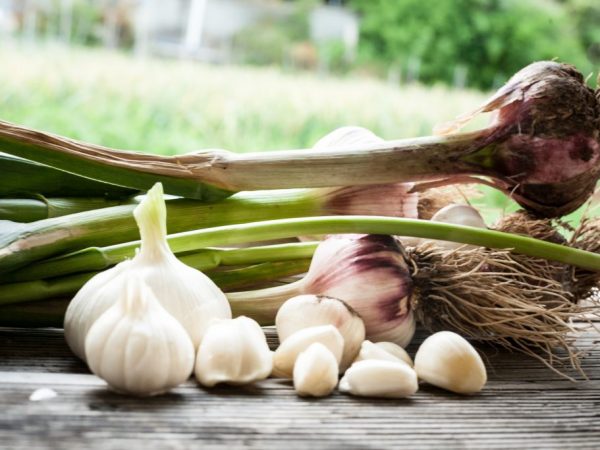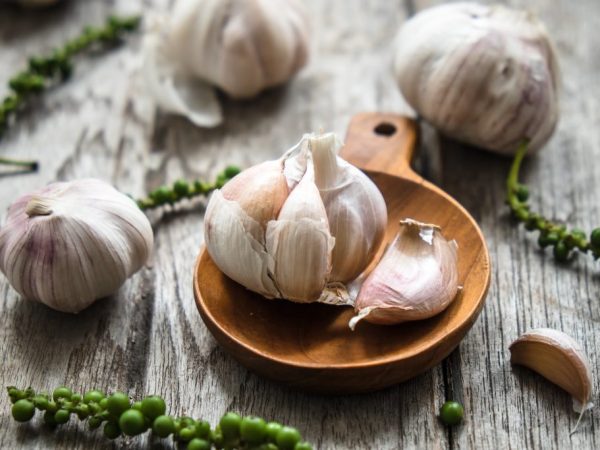Is the garlic business profitable?
Everyone wants to have their own profitable business without large financial investments. The garlic business is one of those. Attractive for novice entrepreneurs is the high yield of the crop, its unpretentiousness and relative resistance to environmental conditions.

Is the garlic business profitable?
Features of growing garlic
The crop is planted in spring or autumn. Healthy large cloves or bulbs are used as planting material. For garlic, you need a small area of open ground. Before planting, the beds are dug 25-30 cm, mineral and organic fertilizers are applied to them.
The denticles are planted in the prepared furrows. They are pre-filled with sand and ash. Seedlings of winter garlic appear in late March, spring garlic in mid-April. The culture is unpretentious in care. Plants need moderate watering every 10 days, top dressing, loosening the soil and removing weeds. For growing crops on an industrial scale, it is wise to use drip irrigation systems.
Conditions for a rich harvest
Garlic as a business will only benefit from high yields. In order for the indicator to meet the requirements, it is necessary to comply with certain standards:
- flat relief without depressions and hills;
- average depth of groundwater occurrence;
- light neutral soil;
- uniform lighting, no shading;
- wind protection.
The average yield is 8-12 tons per hectare, subject to drip irrigation of the soil. Without watering, they get 5-7 tons. Caring for garlic, providing watering, feeding require financial costs, but getting a quality product for sale covers them and makes a profit.
Which garlic is more profitable to grow
The question often arises of which garlic to grow: winter or spring - and what is the profitability of each type.
A spring crop is planted in April or early May. The main advantage of bulbs is their long shelf life. Spring garlic does not bring rich harvests. The indicator can be increased only by expanding the landing area. The bulbs and cloves are small.

Spring garlic has a long shelf life
Winter garlic is planted in October. The crop yield is high, during the winter its resistance to external factors increases, nutrients accumulate. Bulbs and cloves are large in size. When growing a winter crop, there is always a risk of crop loss due to freezing. Also, the bulbs quickly deteriorate, they do not tolerate transportation well.
Sell vegetables and seeds directly. For seed, cloves and bulbs of spring garlic are suitable. Selling bulbs as a food product is best done for the winter. Large winter garlic in the warehouse and on the counter will not last long. The sale is carried out immediately after the harvest, cleaning and sorting of the bulbs.
Business myths
The agrarian business on garlic in conditions of open competition has a profitability of 25-50%.
In the vegetable business, super-profits are observed every 3-4 years, when the demand for the product increases the supply. The phenomenon is associated with the overflow of capital. If little garlic is grown, the price for it rises, there are many people who want to grow and sell the crop. The next year the market becomes oversaturated with the product, the price for it falls. Entrepreneurs are reorienting businesses to a different culture. The price of garlic is on the rise again.
Export product
In European countries, garlic grown by domestic farmers is not highly valued. To meet high standards, the crop must go through the stages of preparation:
- calibration;
- sorting;
- manual cleaning of each bulb;
- packaging;
- cold storage.
Of the entire crop, only 30-50% of the bulbs are selected and allowed for sale, so it is difficult to export products, almost no one succeeded without business experience.
Conclusion
To be engaged in any vegetable, including garlic, business, to get the maximum profit from it, you need to closely monitor the state of the market. It is important to learn logistics, resource management. Skills will help optimize production costs without losing product quality.
The cultivation of garlic has a high profitability, provided that the rules of agricultural technology are observed, and there are normal conditions for its growth. If there are no conditions and resources to provide them, it is better to choose other vegetables.


